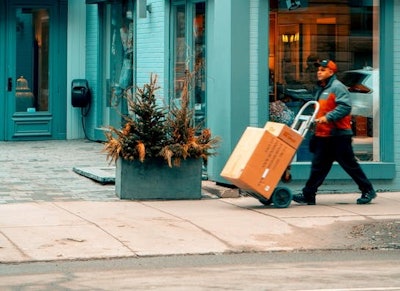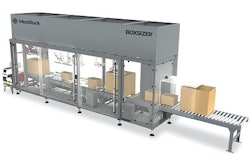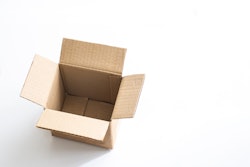
New research, conducted by packaging specialists Duo UK, has found the growing urgency to be more sustainable can mean businesses do not always realize their positive and genuinely green intentions.
The research, which forms part of Duo UK’s Future of Packaging report, found that over half (53%) of respondents believe that ‘reducing environmental impact’ will be the most important factor defining packaging strategies in the next ten years.
However, when asked which factors will influence packaging design and development in the next decade, more than half (59%) of respondents stated ‘cost.' It ranked in the top three most influential factors, alongside ‘branding/customer experience’ and ‘end of life options’, with little difference between how influential cost is today, compared to its perceived influence in ten years’ time.
The continued high ranking of cost highlights a disconnect between the ambition for packaging to become more sustainable, and the prohibitive constraints of expenditure.
This commoditized approach has limited the opportunity for the wider adoption of sustainable packaging solutions. The past few years have seen a gradual shift in this attitude, with forward-thinking companies looking at the far-reaching efficiencies and benefits of sustainable packaging.
This disconnect or ‘Green Gap’ identified by Duo U.K.'s research, exists because, despite there often being a general agreement within an organization that sustainability is important, there isn’t a cohesive approach to putting actions into practice. Businesses are eager to make changes they perceive to be sustainable e.g. material type, without proper consideration of the impact of such changes throughout the supply chain or achieving the full value of the chain by bringing together stakeholders at the initial design stage.
Duo U.K.’s report provides new evidence and examples of forward-thinking organizations, such as premium lifestyle brand Joules, that have looked beyond the bias of price during packaging procurement, realizing packaging spend can equate to value in other areas such as brand loyalty, enabling closed-loop recycling and other fulfillment efficiencies.
Zoe Brimelow, brand director at Duo UK, explained: “Taking a cost neutral approach makes price a secondary consideration, enabling the proper review and trial of different sustainable packaging solutions. This is only possible if businesses move away from such a strong cost-bias during packaging design and development. Testing different options enables companies to analyse how they will impact areas of the business, such as sales and customer satisfaction, and make more informed decisions as a result.”
Further examination of Duo UK’s research shows government policies will also prove more influential in shaping packaging design and development, with over a third (37%) of respondents stating that government policy will have a lot of influence in the next ten years, compared to only 23% today. This marks a significant change in levels of perceived influence, and while this is understandable, it also risks bottlenecking packaging sustainability and widening the Green Gap that Duo UK’s research has identified.
When considering packaging strategies, responses showed a strong bias towards ‘end of life’ options, with 61% of businesses believing it will be the most influential factor in the next decade. This marks a considerable change from current levels of only 43%.
A combination of these elements risks widening the Green Gap through missed opportunities, slow progress to implement meaningful policies and long-term change, and a lack of innovation in packaging technologies.
Anthony Brimelow, commercial director at Duo U.K., said: “Government initiatives and the policies to date have been slow off the mark and are geared towards a circular economy dominated by end of life options and types of packaging material. While our research shows businesses are taking responsibility for where their packaging ends up – a more holistic ‘lifecycle’ view of packaging is what’s required to create a truly sustainable approach to packaging strategies over the next decade.”
In this new report, Duo U.K. explains how cost neutral thinking, progressive policies and overcoming plastic paranoia can bridge the Green Gap identified and find a sustainable way forward for packaging. This will help companies to make sustainability and success interchangeable in their packaging strategies.
“Companies want to deliver quality products and services to customers. Therefore, any changes must be commercially viable to maintain a successful business. By taking a collective approach with suppliers and including all departments within your organization to find ways of improving your packaging’s sustainable credentials, we believe companies will find solutions that don’t cost the earth.
“Businesses should be confident with their customers about the rationale for chosen material types and communicate this at every opportunity. Explain exactly what your company has done to reduce its environmental impact. Don’t be afraid to make changes as new legislation and government policy evolves - doing something is better than doing nothing at all. By being transparent about cost, policy, and the material used in their packaging, companies will be able to truly inform customers and close the Green Gap that currently exists,” added Anthony.
















